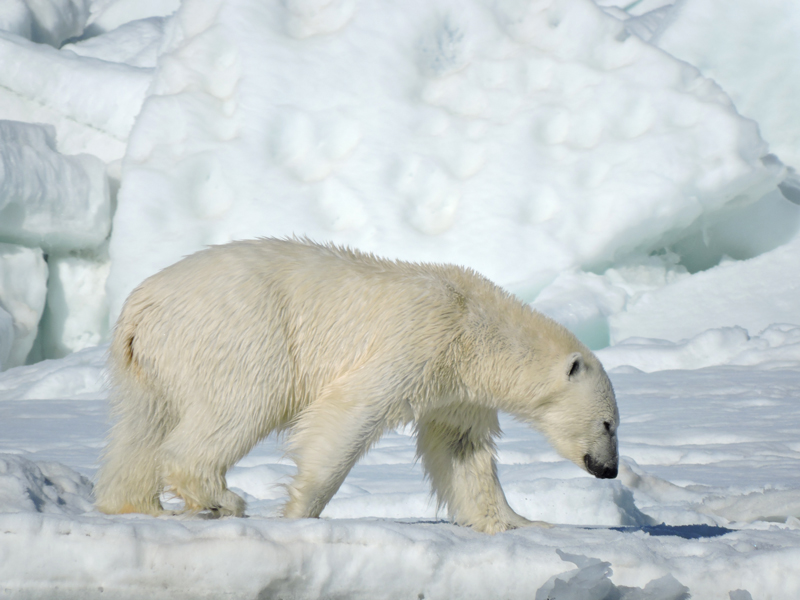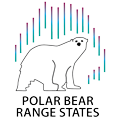 Photo credit: U.S. Fish and Wildlife ServiceClimate change is the over-arching, long-term and most significant threat facing the polar bear. Projected warming over much of the polar bear’s range and associated reductions in the extent and thickness of multi-year and annual sea ice will have both direct (e.g., habitat loss and degradation) and indirect (e.g., changes in prey availability) effects. Earlier melting of sea ice in the summer and later formation of sea ice in the fall will result in greater reliance on terrestrial coastal areas. Importantly, when and where climate change affects polar bear populations is expected to vary. Up-to-date information from scientific studies and other sources is necessary to understand this variation and develop effective conservation measures.
Photo credit: U.S. Fish and Wildlife ServiceClimate change is the over-arching, long-term and most significant threat facing the polar bear. Projected warming over much of the polar bear’s range and associated reductions in the extent and thickness of multi-year and annual sea ice will have both direct (e.g., habitat loss and degradation) and indirect (e.g., changes in prey availability) effects. Earlier melting of sea ice in the summer and later formation of sea ice in the fall will result in greater reliance on terrestrial coastal areas. Importantly, when and where climate change affects polar bear populations is expected to vary. Up-to-date information from scientific studies and other sources is necessary to understand this variation and develop effective conservation measures.
Source: Circumpolar Action Plan
Further reading on the IUCN Polar Bear Specialist Group website
